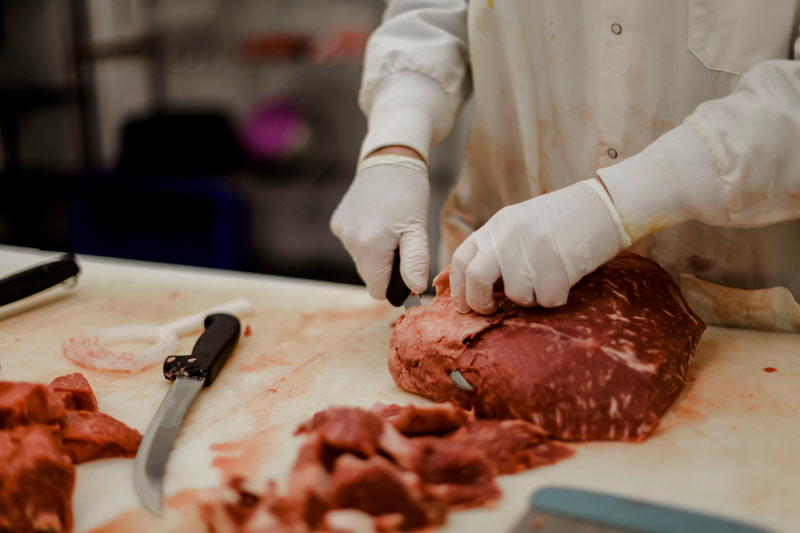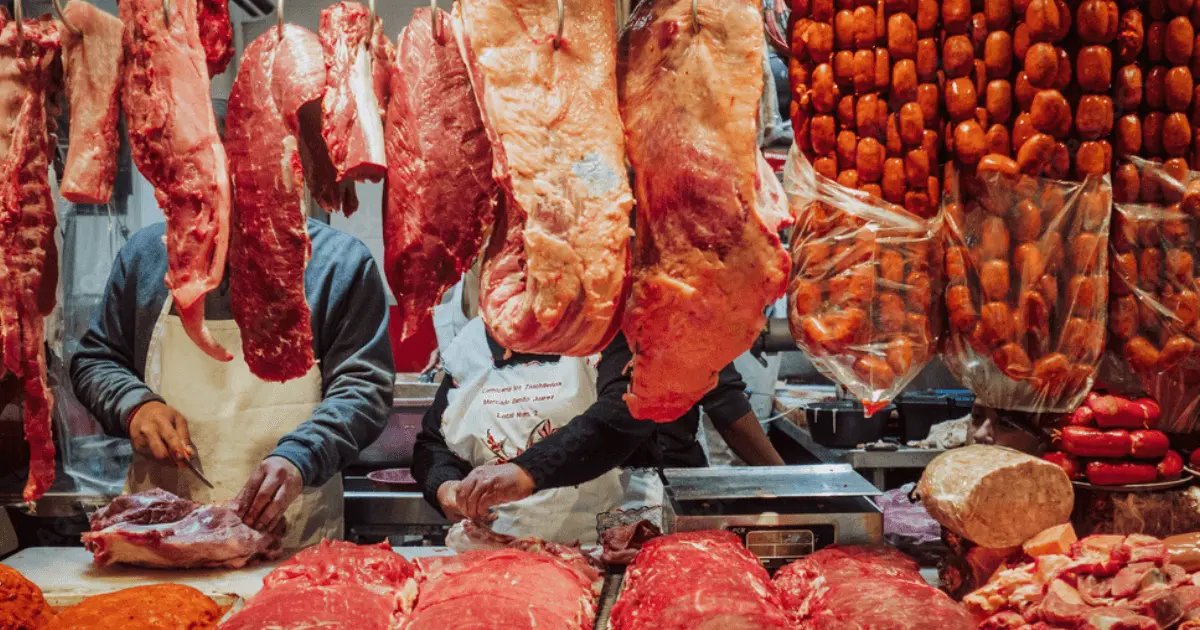Bagley Farms Meat Market Edwardsville IL: Your Best Location for Local Meat Choice
Bagley Farms Meat Market Edwardsville IL: Your Best Location for Local Meat Choice
Blog Article
Uncover the Art of the Butcher's Cut in a Modern Meat Market
In the ever-evolving landscape of modern-day meat markets, the butcher's cut has transcended its typical roots, combining age-old workmanship with modern practices. Today's butchers are not simply processors of meat; they are educated craftsmens that stress sustainability and honest sourcing. Their proficiency in choose and preparing cuts customized to specific culinary demands provides an unmatched dining experience. What genuinely establishes the modern-day butcher apart is their capability to forge a much deeper connection between customers and the origins of their meat. Just how do these masters balance practice with advancement, and what ramifications does this have for the future of meat intake?
Advancement of Butchery Techniques
The development of butchery techniques shows an abundant tapestry of development and adjustment driven by developments in modern technology, modifications in customer demand, and a much deeper understanding of meat scientific research. Historically, butchery was a craft passed down via generations, with methods refined over centuries to maximize yield and taste. However, the commercial revolution ushered in automation, changing conventional techniques and enabling massive handling.
The mid-20th century saw butchery techniques additionally improved by clinical insights into muscle mass biology and meat aging, boosting both inflammation and taste. Innovations like vacuum packaging and refrigeration prolonged product shelf-life, enabling butchers to branch out offerings and boost top quality control. This duration also noted the rise of specialized tools, such as band saws and meat slicers, which raised precision and efficiency in meat handling.

The 21st century has introduced electronic technology into the butchery world. Digital systems now assist in tracking animal provenance and optimizing cuts to fulfill specific client choices. Additionally, a revival in artisanal butchery has emerged, mixing standard abilities with modern expertise to cater to consumers looking for ethical and lasting meat choices. This development underscores a dynamic interaction in between practice and technology, meeting contemporary needs while maintaining the craft's heritage.
Understanding Meat Cuts
Comprehending the ins and outs of meat cuts is important for both butchers and consumers looking for top quality and worth. For butchers, specific cuts reflect skill and respect for the craft, making certain very little waste and ideal yield.

Recognizing muscle mass structure is important; muscles used much more regularly by the animal tend to be tougher and are best suited for slow food preparation approaches, while less-used muscles, like those discovered in the loin, are a lot more tender and suitable for grilling or roasting. Familiarity with these distinctions empowers customers to make educated options, enhancing their cooking undertakings.
Choosing High Quality Meat
Picking the right meat includes even more than just selecting a visually attractive piece from the display. bagley farms meat market edwardsville il. The art of picking high quality meat requires a discerning eye and knowledge of particular features that signify quality and quality. Firstly, take notice of the color; beef should have a brilliant, cherry-red tone, while lamb must display a soft pink tone, and pork a light pink. This shows the meat is fresh and hasn't you could try these out been exposed to oxygen for too long.
Second of all, think about the marbling, which refers to the white streaks of fat within the muscle mass. Appropriate marbling is a crucial indicator of tenderness and taste, as it thaws during cooking, improving the meat's juiciness. Bear in mind, higher marbling often associates with exceptional high quality cuts, such as USDA Prime.
Structure is another critical element; meat ought to really feel solid to the touch, not slimy or extremely soft. Additionally, be conscious of the aroma. Fresh meat ought to have a tidy, neutral odor, devoid of any sour or off-putting odors.
Matching Cuts With Food Preparation Techniques

Alternatively, harder cuts like brisket and chuck roast are rich in collagen, which damages down right into gelatin when prepared gradually. These cuts are ideal for braising or slow roasting, allowing the meat to soften gradually and develop deep, intricate tastes. Cuts such as short ribs and pork shoulder fare well with slow-cooking methods, where extended cooking times change their durable structures into delicious recipes.
Lamb shanks and oxtail, which require extended food preparation to soften, are best candidates for stewing or slow-moving simmering. These approaches coax out rich, hearty flavors while keeping dampness. By understanding the one-of-a-kind features of each cut, cooks and home chefs alike can boost their cooking productions, guaranteeing each meal is both satisfying and remarkable.
The Butcher's Role Today
Navigating the progressing landscape of the modern meat market, the butcher's role today prolongs beyond simple prep work of cuts. Contemporary butchers are cooking craftsmens, educators, and advocates for sustainable methods. They link the gap between the farm and you could try here the fork by ensuring moral sourcing, understanding animal husbandry, and prioritizing transparency in the supply chain. This change reflects the growing customer need for high quality over quantity, where provenance and animal welfare are critical.
In enhancement to crafting exact cuts, butchers currently engage directly with clients, providing cooking suggestions and tailoring choices to fit specific demands and choices. Their proficiency in meat aging, marbling, and flavor accounts encourages customers to make informed choices, boosting their culinary experiences. This individualized service exhibits the butcher's developing duty as a trusted expert in the kitchen area.
Furthermore, butchers are crucial in lessening waste, using entire pets to produce varied items such as sausages and stocks. This extensive technique not only respects the pet yet also aligns with contemporary sustainability goals. In this means, the modern butcher symbolizes both practice and advancement, adjusting to an ever-changing market while maintaining the virtuosity and honesty of their craft.
Conclusion
Mastery in comprehending varied meat cuts and high quality indicators encourages butchers to supply educated suggestions, aligning specific cuts with ideal food preparation approaches. By honoring historical techniques while embracing modern demands, the butcher's role stays crucial in today's sophisticated meat market.
Report this page